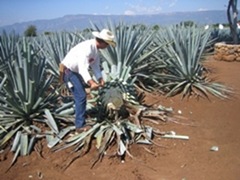 The New York Times has an interesting article entitled, “The Future is Drying Up” outlining issues the West faces in accommodating a burgeoning population, a decrease in water, and some of the ramifications of the current litany of water rights hampering water managers.
The New York Times has an interesting article entitled, “The Future is Drying Up” outlining issues the West faces in accommodating a burgeoning population, a decrease in water, and some of the ramifications of the current litany of water rights hampering water managers.
“Pulwarty asked if I knew the projections for what it would take to refill Lake Powell, which is at about 50 percent of capacity. Twenty years of average flow on the Colorado River, he told me. “Good luck,” he said. “Even in normal conditions we don’t get 20 years of average flow.”
The water issues of the South are merely current events, the real battles are likely to be waged in the West, with the Colorado River being the real litmus test, the worst possible legal scenario.
“Some 30 million people depend on that water. A greatly reduced river would wreak chaos in seven states: Colorado, Utah, Wyoming, New Mexico, Arizona, Nevada and California. An almost unfathomable legal morass might well result, with farmers suing the federal government; cities suing cities; states suing states; Indian nations suing state officials; and foreign nations (by treaty, Mexico has a small claim on the river) bringing international law to bear on the United States government.”
It appears that wildlife will have to fend for itself, as little mention is made of the impacts to flora and fauna; voters get water, all else is inconsequential. The US actually uses less water than it did 25 years ago, but the growth in population is likely to dominate all other causal agents.
“The people who move to the West today need to realize they’re moving into a desert,” Mulroy said. “If they want to live in a desert, they have to adapt to a desert lifestyle.”
That means Saguaro cactus on your front lawn, not well manicured grass.
For those cities carved from the raw desert, like Las Vegas and most of Southern California, it means deprivation and increased cost. While there is enough to go around voters will insist on lawn versus wildlife, but that’s the easy part. When there isn’t enough to go around, that’s when it will pit voter on voter, and that is a different battle.
Most of the water managers in the article agree that cost will be on the increase soon. It’s envisioned as a “pay for what you use” style arrangement, with hefty bills for lush backyard growth.
If you thought brownlining was for sissies, you may want to rethink that. Water managers recognize that most of the natural water is spoken for by cities, farmers, and other states. Finding new sources of water is impractical due to evaporation during transport – not to mention the cost of trenching canals or building pipelines that may have to go many hundreds of miles.
Re-use of existing water is where we may be headed. Used, cleansed, released into natural rivers, lakes, or canals – then recaptured via filtration downstream. Wells are dug near the river channel, and wastewater is reclaimed via filtration from the river through the sediment and rock to the wellhead. As wastewater is typically many degrees warmer than natural water, due to the cleansing process, we may elevate the rivers temperature in the process.
Call it “local warming” rather than global – no matter what the title, it’s sure to play hell with resident fish and bug life. Brownlining may be headed for the mainstream, just remember who loves ya…
Read the article, it’s compelling.
Technorati Tags: western water rights, drought, water conservation

Whisky’s for drinking and water’s for fighting
A great Sam Kinnison quote
“Ya know why nothing grows there? Because you live in a F#
F#
weird, sorry Keith
kin desert!!”
With last year’s drought in California, the water wars are clearly off and running. I live in the water-rich mountainous part of the state, so my only real hope is that the shelling will be contained in the southern half of the state.
The Southern end of the state is a charcoal briquet, we’ll need your water to put out the coals.
…and restore all those lawns.
Pingback: The Privatization of Fish will be a by product | Singlebarbed